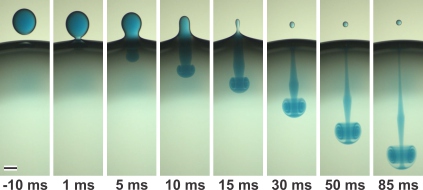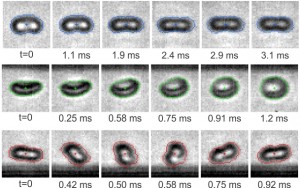High speed imaging of charge transfer events in drops
CAREER Award, National Science Foundation (CBET)
The main scientific goal of this research is to answer the question: how do droplets acquire charge? Recent work by the PI has revealed the existence of a critical electric charge density above which oppositely charged drops do not coalesce (Ristenpart et al., Nature 2009). Strikingly, there are no extant models that accurately predict the amount of charge transferred to a liquid drop upon contact with an electrified surface. Our experimental framework allows groundbreaking, fundamental studies of charge transfer dynamics in emulsions by combining simultaneous high- speed visualization and chronocoulometric techniques.
Influence of Oxidative Stress on Shear-Induced Mechanotransduction in Red Blood Cells
Current support: NSF CMMI Biomechanics and Mechnobiology
The main scientific goal of this proposal is to answer the question: how does oxidative stress affect the response of red blood cells to shear stress? Recent work by the PI and colleagues has established an in vitro microfluidic technique for probing how blood cells respond to sudden changes in shear stress (Wan et al., PNAS 2008). Oxidative chemicals are known to affect the ‘fluidity’ of red blood cell membranes, but little is known about their influence on the dynamic response to changes in shear stress. This research allows fundamental studies of the dynamics of shear-induced deformations in red blood cells under conditions of oxidative stress.

